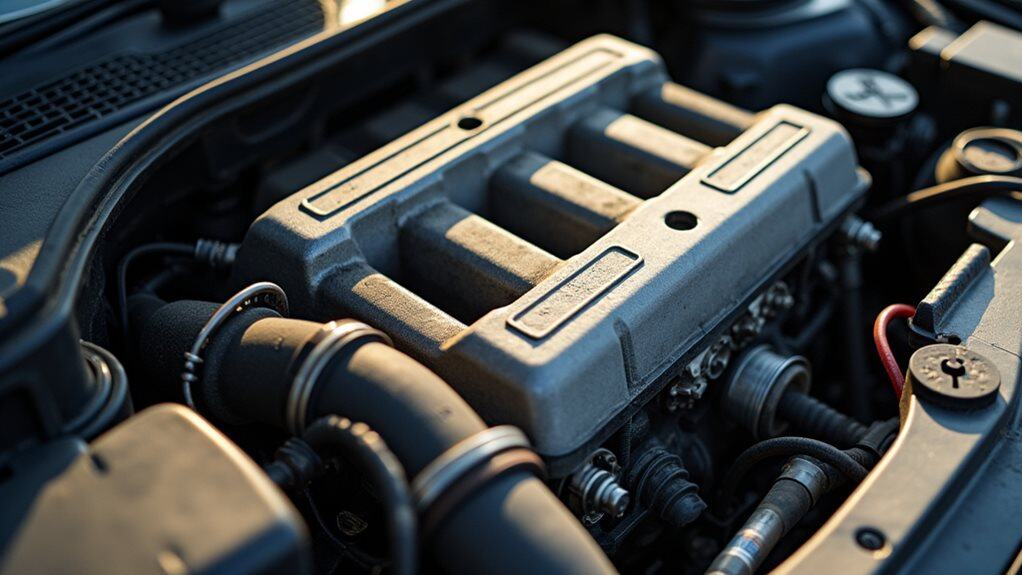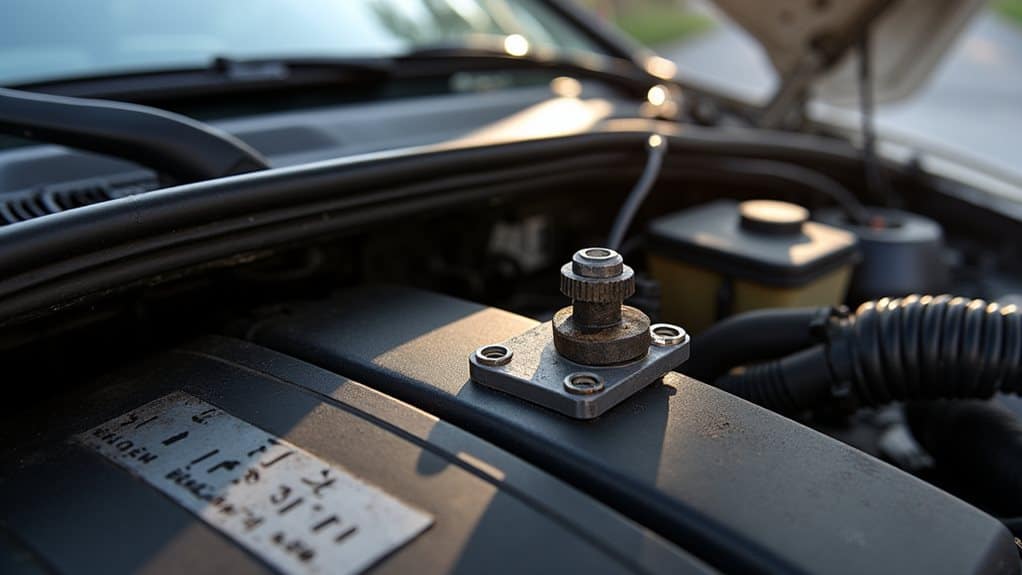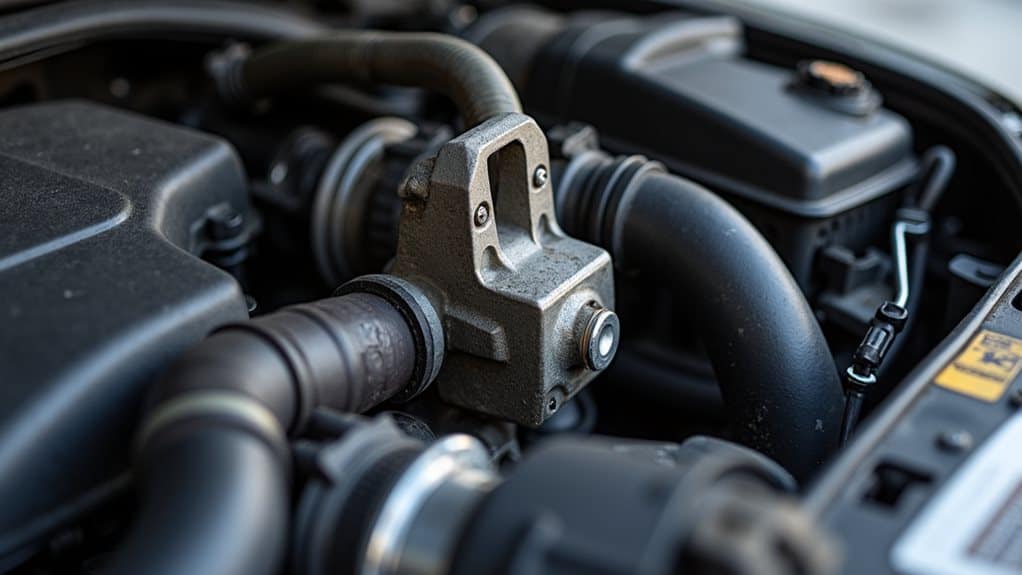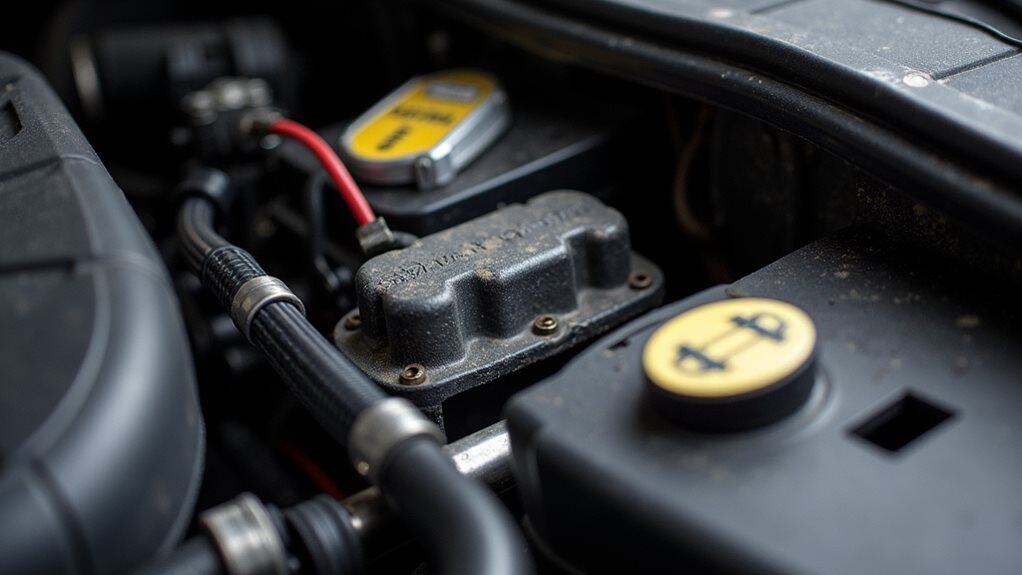Deleting your E46’s secondary air pump offers several advantages, including a cleaner engine bay, reduced maintenance costs, and approximately 1.6kg weight savings. However, you’ll face potential emissions compliance issues and check engine lights without proper ECU coding. You’ll need specific tools like a 10mm spanner, OEM panel, and matching gasket for installation. While the modification simplifies your engine bay, understanding local emissions regulations and required programming steps guarantees a successful implementation. Further exploration of the process reveals critical technical details.
Quick Tips
- SAP deletion saves approximately 1.6 kg weight and reduces maintenance costs by removing failure-prone components from the E46 engine bay.
- Installation requires a 10mm spanner, OEM panel, matching gasket, and proper torque settings of 25Nm for secure fitment.
- ECU programming is essential after deletion to prevent check engine lights and requires INPA/Ediabas software with OBD2 connection.
- Local emissions regulations should be checked, as SAP removal may cause failed inspections and potential fines in strict regions.
- The modification improves engine bay access and organization but increases catalyst warm-up time and affects emissions compliance.
Understanding the Secondary Air Pump System in E46 BMWs

While you mightn’t think about it often, your E46 BMW’s secondary air pump system plays an essential role in managing emissions and supporting the catalytic converter during cold starts.
The system consists of a pump that draws in fresh air, valves that control its flow, and hoses that direct it to the exhaust manifold. A clogged catalytic converter can severely affect the performance of the secondary air pump, leading to increased emissions and potential engine issues. The OEM replacement pump typically costs around 189.99 dollars for E46 models.
It’s a critical component that helps your car meet emissions standards.
Benefits of SAP Deletion on Your E46
Removing your E46’s Secondary Air Pump creates a cleaner, more organized engine bay by eliminating unnecessary components and their associated brackets. You’ll benefit from easier access to other engine parts during maintenance, while the simplified system reduces the number of potential failure points that could require costly repairs. As a Track Car Build enthusiast, this modification is particularly beneficial for optimizing engine bay layout and reducing weight. Additionally, eliminating unnecessary components can help reduce battery issues that may arise from added electrical complexity in the system. The streamlined engine bay not only looks more professional but also makes future diagnostic work and repairs more straightforward, potentially saving you money in the long run.
Enhanced Engine Bay Simplicity
Several notable benefits emerge when you delete the Secondary Air Pump from your E46’s engine bay, with enhanced simplicity leading the way.
You’ll shed approximately 1.6 kg of weight while eliminating unnecessary components that clutter your engine compartment.
This removal not only improves visibility for maintenance but also reduces cold-start noise and minimizes potential vacuum line leaks, creating a cleaner, more serviceable engine bay.
Lower Long-Term Maintenance Costs
Once you’ve decided to delete your E46’s Secondary Air Pump, you’ll uncover significant cost benefits that extend well beyond the initial modification.
You’ll save between $250 and $720 on future pump replacements, eliminate labor costs for SAP maintenance, and reduce the risk of water damage to your pump.
Potential Drawbacks and Risks

Although deleting the Secondary Air Pump (SAP) on an E46 BMW might seem appealing, you’ll need to contemplate several significant drawbacks and risks before proceeding.
You’ll face slower catalyst warm-up times, which can affect emissions compliance, and you might trigger check engine lights without proper coding.
Additionally, you’ll risk failing emissions tests in regions with strict regulations, while incorrect vacuum line blocking can create performance issues. Moreover, frequent inspections of related components can help mitigate potential problems arising from this modification.
Required Tools and Materials
After evaluating the risks, gathering the right tools and materials becomes your next important step for a successful Secondary Air Pump deletion.
You’ll need a 10mm spanner, the OEM panel (BMW #11121438086), and a matching gasket (BMW #11727514860).
For mounting, consider BMW stud #11721742644, or you can opt for a custom delete plate made from aluminum, which should be torqued to 25Nm. Additionally, ensure you check for signs for fuel pump replacement to avoid any potential issues during your vehicle modifications.
Step-by-Step SAP Removal Process

Before starting your SAP removal, you’ll need basic hand tools including a 10mm socket set, flathead screwdriver, and needle-nose pliers for accessing tight spaces.
You should always wear safety glasses and gloves, as you’ll be working with potentially sharp edges and components that might’ve residual oil or grease.
For maximum safety and efficiency, make certain your E46 is cold and disconnected from the battery before beginning the removal process.
Removal Tools Required
Several essential tools are required for a successful Secondary Air Pump (SAP) removal on your E46 BMW.
You’ll need a 10mm spanner or ratchet for bolt removal, a 17mm wrench for pump grommets, and a 6mm or flathead screwdriver for clamps.
Don’t forget your torque wrench for proper reassembly and a socket set for those hard-to-reach areas.
Safety Precautions During Removal
Now that you’ve gathered your tools, implementing proper safety measures during the Secondary Air Pump removal process will protect both you and your E46 BMW.
Begin by disconnecting your battery’s negative terminal to prevent electrical shorts.
Make sure your engine’s completely cool before starting, and wear protective gloves and eyewear.
You’ll need to carefully label all electrical connections and vacuum lines for proper reassembly later.
ECU Programming and Coding Requirements
When deleting the Secondary Air Pump (SAP) on your E46 BMW, proper ECU programming and coding become essential components of the modification process.
You’ll need a Windows laptop or Android device, an OBD2 cable with updated firmware, and specialized software like INPA/Ediabas.
Before making changes, back up your current ECU settings and verify existing codes.
Then install a custom tune that’ll bypass rear O2 sensors and prevent error codes.
Legal Implications and Emissions Considerations

Before proceeding with a Secondary Air Pump delete on your E46 BMW, you’ll need to understand the complex legal implications and emissions considerations that come with this modification.
Removing the SAP might violate local emissions regulations, leading to potential fines and failed inspections.
While some regions have lenient requirements, others, like California, enforce strict standards.
You’ll need to research your area’s specific laws before making this change.
Testing and Verification After Deletion
Testing and verifying your E46’s performance after a secondary air pump deletion requires a systematic approach to ascertain proper functionality across multiple systems.
You’ll need to scan for trouble codes with an OBD-II reader, monitor live data from sensors, and perform thorough test drives under various conditions.
Don’t forget to check vacuum lines, inspect block-off plates, and confirm your ECU has been properly tuned to accommodate the deletion.
Wrapping Up
Removing your E46’s secondary air pump can improve engine bay space and eliminate potential failure points, but you’ll need to weigh these benefits against emissions compliance and legal requirements. If you’ve decided to proceed, make sure you’ve gathered all necessary tools, followed proper procedures, and completed the required ECU coding. Whatever your choice, maintaining your E46’s performance while staying within local regulations should guide your decision.

